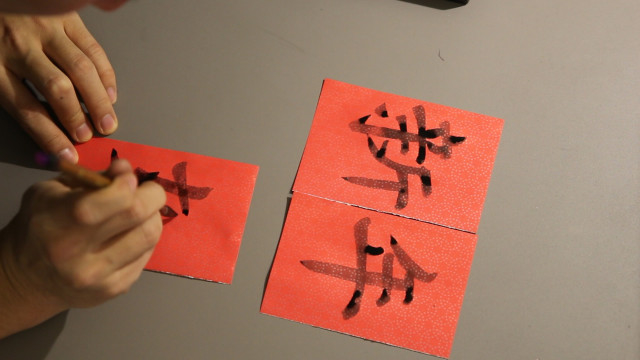During Spring Festival doorways and windows across China are adorned with calligraphy. The tradition originated during the Later Shu state (934-965 A.D.) during the Five Dynasties and Ten Kingdoms period in China, according to the China Travel Guide.
In the Song Dynasty (960-1279 A.D.) the tradition was enhanced to include people’s best hopes for the the new year written on red paper.
Chinese calligraphy is more than mere words though, as artists must combine their scholarly knowledge of the character with their own unique style. According to the Smithsonian’s Museums of Asian Art, six major and distinct writing styles have developed over 3,000 years, and all are still today. They include: oracle bone, seal, clerical, cursive, running, and standard.
Our resident calligrapher — Du Yubin — follows the standard style, but we hope you’ll agree that his writing is far from ordinary.
Du writes: 新年好 (xin nian hao) which means: Happy New Year:

Du writes 春 (chun) which means: Spring. The character is often hung upside-down before Chinese New Year signifying that spring is coming. After the new year, it’s reversed.

Spring final
Du writes 恭喜发财 (gong xi fa cai) which means literally: “Congratulations and Get Rich!” and is a common expression of well wishes during Chinese New Year.

 CGTN America
CGTN America
